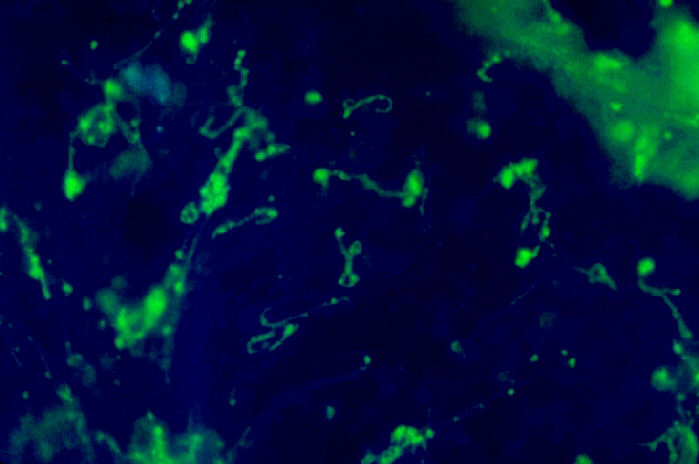According to an Indian online newspaper, there has been a recent spike in the number of cases of leptospirosis – a water-borne zoonotic disease – in the Uttara Kannada district of India. Uttara Kannada, also known as North Canara, is a district in the western Indian state of Karnataka located on the southwest coast of India. The report states that as many as 18 cases have recently occurred in the district and that approximately 40 cases have been reported each year in 2013 and 2014.

Leptospirosis is an emerging global health problem. The disease, caused by a corkscrew-shaped bacterium called Leptospira interrogans, is often referred to as “rat fever” due to the principal role rats play in spreading the disease (scientists refer this type of animal as a reservoir host). However, in India, in addition to rats, pigs, cattle, bandicoots, dogs, and cats can also be important reservoirs of the disease.
These animals can spread the disease in their urine, contaminating water, soil, or food. People who live in close contact with domestic animals or wildlife are at higher risk for getting the disease.
People become infected by coming into contact with contaminated urine, water, food, or soil through breaks in the skin, eyes, mouth, or nose. Infected individuals initially experience fever, severe headache and muscle aches, abdominal pain, and occasionally a skin rash. Patients in the later stages of disease can suffer from jaundice, kidney failure, bleeding from the mouth or nose, bloody urine and can be fatal, especially without proper treatment.
Public health officials in India have reason for concern when it comes to leptospirosis. The disease is a major problem in India due to the occurrence of monsoons, poor sanitary conditions, and a high percentage of the population being involved in the agriculture industry, which is a major risk group for contracting the disease. In addition, the disease is often exacerbated by national disasters such as hurricanes, tsunamis, and floods. Most outbreaks of leptospirosis in India are reported in the coastal regions.
One of the largest outbreaks (1,516 cases) was reported in the Karnataka State in 2007. And the Andaman and Nicobar Islands tops the list of the most endemic areas of the world. According to a review article on the worldwide incidence trends of leptospirosis, underreporting is a major problem in evaluating the actual incidence of leptospirosis in many Asian countries, and while India is “probably endemic” for leptospirosis, no national-level data are available. In the United States, as of January 2013, leptospirosis has been reinstated as a nationally notifiable disease.
Ramesh Rao, a vector-borne disease control officer in Uttara Kannada, said in the report “It [leptospirosis] can be prevented by taking measures like drinking boiled water, keeping cooked food covered, consuming fresh food, and keeping rodents including rats from homes.”
Chris A. Whitehouse is a microbiologist and science writer who lives in Maryland. He writes extensively on emerging infectious diseases of humans and animals.


One thought on “Parts of India experience an increase in leptospirosis”